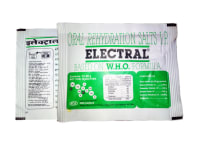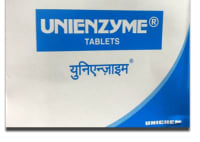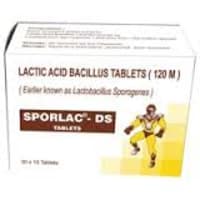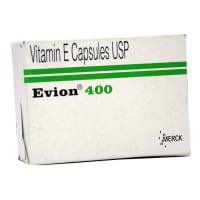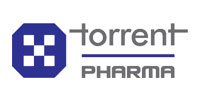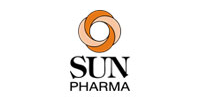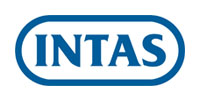USED FOR:
Post-operative eye pain and inflammation
Bacterial infections
COMPOSITION:
Loteprednol (0.5% w/v)
Tobramycin (0.3% w/v)
Therapeutic Uses:
ophthal
ophthal otologicals

No interaction found

WEIGH RISKS VS BENEFITS
Nebracin LP Eye Drop is unsafe to use during pregnancy.There is positive evidence of human fetal risk, but the benefits from use in pregnant women may be acceptable despite the risk, for example in life-threatening situations. Please consult your doctor.

Nebracin LP Eye Drop is probably safe to use during lactation. Limited human data suggests that the drug does not represent a significant risk to the baby.To reduce the amount of Nebracin LP Eye Drop that reaches the breastmilk, place pressure over the corner of the eye for 1 minute or more, then remove the excess solution with an absorbent tissue.

Nebracin LP Eye Drop may cause blurring of your vision for a short time just after its use. Do not drive until your vision is clear.

Nebracin LP Eye Drop is probably safe to use in patients with kidney disease. Limited data available suggests that dose adjustment of Nebracin LP Eye Drop may not be needed in these patients. Please consult your doctor.

Nebracin LP Eye Drop is probably safe to use in patients with liver disease. Limited data available suggests that dose adjustment of Nebracin LP Eye Drop may not be needed in these patients. Please consult your doctor.
Uses of Loteprednol
Loteprednol is used in the treatment of post-operative eye pain and inflammation.
How to use Loteprednol
This medicine is for external use only.Take it in the dose and duration as advised by your doctor. Check the label for directions before use. Hold the dropper close to the eye/ear without touching it. Gently squeeze the dropper and place the medicine inside the lower eyelid or ear. Wipe off extra liquid.
How Nebracin LP Eye Drop works
Loteprednol is a topical steroid (anti-inflammatory medicine). It works by stopping the release of certain natural substances in the eye that are responsible for pain and inflammation (redness and swelling).
Common Eye discharge, Dry eye, Teary eyes, Foreign body sensation in eyes, Eye redness, Burning sensation around the eyes.
Expert advice for Loteprednol
Your doctor has prescribed Loteprednol for the relief of post-operative eye pain and inflammation. Do not use Loteprednol for more than the prescribed duration (1 weeks, post-operative) as it may cause glaucoma or secondary infection. Notify your doctor if you recently had herpes or chicken pox. Take care to prevent contact of eye dispenser with eye, eyelid, eyelashes, or finger to avoid infection. Avoid wearing contact lenses after surgery and while using Loteprednol.
Q. What is Loteprednol/Loteprednol etabonate?
Loteprednol is a corticosteroid available as an eye drop that reduces inflammation of superficial structures of the eye.
Uses of Tobramycin
Tobramycin is used in the treatment of bacterial infections.
How to use Tobramycin
This medicine is for external use only.Take it in the dose and duration as advised by your doctor. Check the label for directions before use. Hold the dropper close to the eye/ear without touching it. Gently squeeze the dropper and place the medicine inside the lower eyelid or ear. Wipe off extra liquid.
How Nebracin LP Eye Drop works
Tobramycin is an antibiotic. It kills bacteria by inhibiting synthesis of essential proteins, required by bacteria to carry out vital functions.
Common Nausea, Vomiting, Diarrhoea, Skin rash, Hearing loss, Balance disorder (loss of balance).
Expert advice for Tobramycin
Do not use tobramycin if you are allergic to it or any other component in the formulation.
Driving and using machinery should be avoided in cases where tobramycin usage causes dizziness or eye drops cause blurring of vision.
Do not mix or dilute your tobramycin with any other medicine in your nebulizer.
If you are taking several different treatments for cystic fibrosis, you should take them in the following order: bronchodilator (e.g. salbutamol), then chest physiotherapy, followed by inhaled medicines, and then tobramycin.
Do not use contact lenses when on treatment with tobramycin eye drops.
If you are using more than one eye drop, keep a gap of at least 5-10 minutes between two different eye drops.
Doctor’s advice should be considered in case of patients with following history of disease conditions: neuromuscular disorders such as parkinsonism, myasthenia gravis (characterized by movement disorders and/or muscle weakness); coughing up blood in your sputum; kidney problem.
Inform your doctor if you have ever experienced in the past: ringing in ears, any other problems with hearing, dizziness while taking tobramycin.
Q. Is tobramycin a sulfa drug or penicillin antibiotic?
No. Tobramycin is an aminoglycoside antibiotic used to treat Pseudomonas infections and other serious infections in patients (6 years and older) with cystic fibrosis
Q. Does tobramycin treat styes, Pseudomonas, pink eye, staphylococcus and methicillin resistant staphylococcus aureus (MRSA)?
Tobramycin/dexamethasone combination can be used to cure pink eye and styes, which are superficial eye and eyelid infections. Tobramycin treats Pseudomonas infections however it is not drug of choice in the treatment of staphylococcus or MRSA
Q. Is tobramycin safe for infants?
No. Due to high propensity for kidney and internal ear damage, tobramycin shouldn't be given to infants
Q. Is tobramycin over the counter?
No. Tobramycin belongs to schedule H and can be obtained only on production of valid prescription
Q. Is tobramycin the same as ofloxacin?
No. Tobramycin and Ofloxacin belong to different class of antibiotics, and are used to treat different sets of infections.


 Nebracin LP Eye Drop
Nebracin LP Eye Drop  Bookmark
Bookmark
